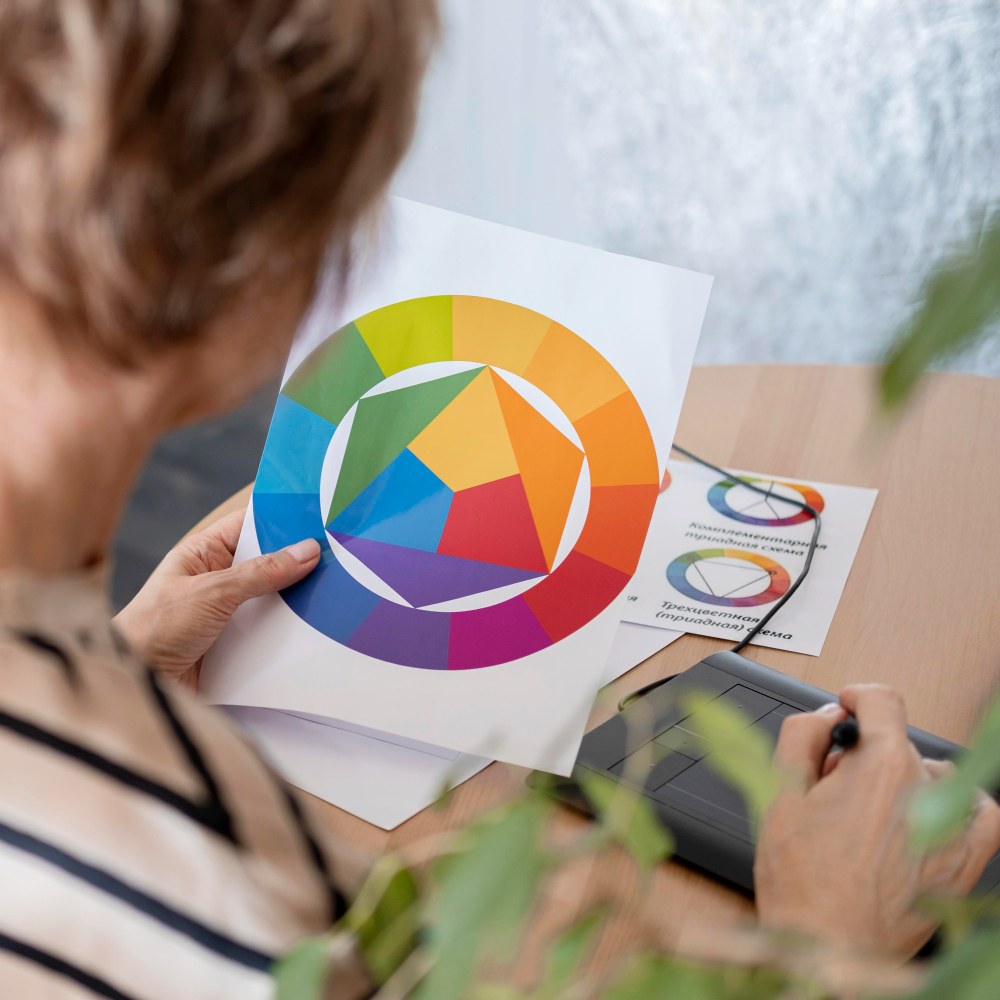Color Theory 101: A Complete Guide to Color Wheels & Color Schemes
The Fascinating World of Color
Color is an integral element of our visual world. It affects our emotions, choices, and perceptions more than we might realize. Understanding the basics of color theory is crucial for artists, designers, and anyone interested in visual aesthetics. In this guide, we’ll explore the fundamentals of color theory, color wheels, and color schemes, helping you unleash the power of color.
The Building Blocks – What Is Color?
Understanding the essence of color is a foundational step in grasping the broader concept of color theory. Before delving into the intricacies of color wheels and schemes, we need to comprehend the fundamental nature of color.
Color is the visual perception of different wavelengths of light. It’s the result of our eyes detecting light and our brains interpreting that information into various colors. The visible spectrum of light contains a vast range of colors, but our discussion centers on the three primary attributes that define color: hue, value, and chroma.
Hue represents the color family an object belongs to, like red, blue, or yellow. Value pertains to the lightness or darkness of a color. Chroma is the saturation or intensity of a color. Understanding these attributes provides the vocabulary for discussing and working with color.
The Color Wheel – An Artistic Necessity
The color wheel is a fundamental tool that artists, designers, and color enthusiasts use to navigate the world of color. It’s a visual representation of the color spectrum arranged in a circular format. The color wheel is divided into different sections, each representing a primary, secondary, or tertiary color. Let’s explore its significance.
The color wheel’s history dates back to the late 17th century, evolving through the works of artists and scientists. It’s a versatile tool that simplifies the complex world of color. One of the essential aspects of the color wheel is the primary colors: red, blue, and yellow. All other colors are derived from mixing these primary colors.
The color wheel also introduces us to secondary colors, which result from mixing primary colors: red + blue = purple, blue + yellow = green, and yellow + red = orange. In between the primary and secondary colors, you’ll find the tertiary colors, such as red-orange, yellow-green, and blue-purple.
The color wheel serves as a reference point for understanding color relationships and creating harmonious color palettes. It plays a pivotal role in color theory and design. By comprehending the arrangement of colors on the wheel, artists and designers can make informed choices, ensuring their creations are visually appealing.
Color Harmonies – The Art of Pairing Colors
Color harmonies are the art of combining colors to create visually pleasing and balanced palettes. It’s about understanding how different colors interact with each other and finding combinations that evoke the desired emotions and aesthetics.
Complementary Colors: Complementary colors are pairs of colors that are located directly opposite each other on the color wheel. For example, red and green or blue and orange. When placed together, complementary colors create high contrast and can make each other appear more vibrant. This contrast is often used to draw attention in design.
Split-Complementary Colors: The split-complementary color scheme is a variation of the complementary scheme. Instead of using the direct opposite color, it uses two adjacent colors to the complement. For instance, if you choose blue as the base color, the split-complementary colors could be yellow-orange and red-orange. This scheme offers a balanced contrast while being less overpowering than complementary colors.
Triadic Colors: Triadic color schemes are created by selecting three equidistant colors on the color wheel, forming an equilateral triangle. For example, the primary colors are red, blue, and yellow, and the secondary colors are orange, green, and purple. Triadic schemes offer a high level of color contrast while retaining color balance.
Understanding these concepts will empower you to choose colors that work harmoniously together, enhancing the visual impact of your artistic or design projects.
Color Schemes – Infusing Creativity into Design
Now that we’ve explored the fundamentals of the color wheel and color harmonies, let’s dive deeper into color schemes. Color schemes are the combinations of colors that are used in design, art, and various creative endeavors to create visual harmony and convey particular messages or emotions.
Monochromatic Color Scheme: A monochromatic color scheme is one that uses different shades, tints, and tones of a single color. This results in a simple, elegant, and cohesive look. Monochromatic schemes are easy on the eyes and create a sense of visual unity.
Analogous Color Scheme: Analogous color schemes are created by selecting colors that are adjacent to each other on the color wheel. For example, using blue, blue-green, and green together. Analogous colors create a sense of harmony and are often found in nature.
Contrasting Color Scheme: Contrasting color schemes use colors that are located opposite each other on the color wheel, like red and green, or blue and orange. These combinations create a striking visual contrast and are often used to draw attention.
Wrap Up
As we conclude this exploration of color theory, you’ve gained a deeper understanding of the fundamental concepts that underlie color and its application in art, design, and beyond. Color theory, the color wheel, and colo schemes serve as essential tools to enhance your creative projects, whether you’re an artist, designer, or simply someone who appreciates the beauty of color.
The knowledge you’ve acquired will empower you to make informed color choices, create harmonious compositions, and evoke specific emotions through your creative work. From selecting the right complementary colors to choosing the perfect analogous scheme, you’re now equipped to make colors work for you. The colorful world of possibilities awaits your artistic and design endeavors.



![How to Design a Logo [Step-by-Step Guide]](https://marketscrawl.com/wp-content/uploads/2023/10/female-logo-designer-working-graphic-tablet-768x512.jpg)



